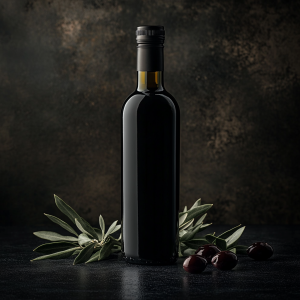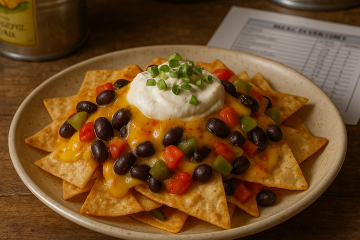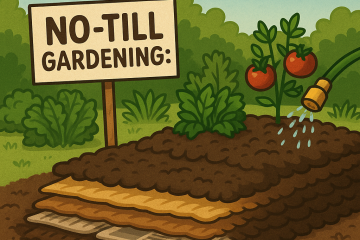
extra virgin olive oil in dark glass or metal containers has the longest shelf life.
Part 1 of 2
Here it is…everything you need to know about storing oils and fats and here’s a video that gives you a little more information: https://www.youtube.com/watch?v=M4nLN-35bTo&t=6s
Every chef knows the value of having the right oils and fats on hand in order to ensure unlimited culinary possibilities, and any nutritionist who’s worth anything understands the necessity of having quality fats in our diet. But most of us face a dilemma in purchasing the right kinds of oils that provide us with long shelf-life, affordability, and taste. I’m sure that most of my Preparedness Pro friends have been assaulted at one time or another with that terrible smell of rancid oil as we open a container that’s been hanging around in our pantry for a while. I don’t care if your sinuses have been stuffed up for a year; there’s no one who can ignore that nasty smell! Whew! But the truth is oils and fats aren’t exactly the golden child of long-term storage given current production and packaging standards today. Most are very susceptible to going rancid as a result of oxygen exchange. In many instances we purchase cooking oils without understanding that they are already in the first stage of being rancid as is the case with Canola oil and any other hydrogenated oil. Did you know that much of the restaurant industry actually adds a fragrance/deodorizer to their cooking oil (i.e. deep fryers) so that they can get extended use out of it while masking the rancid odor that would typically be present? Anyway, enough about all of that. I’m sure you’d prefer to learn everything you need to know about properly storing cooking and baking oils and fats. Sure. No problem!
I realize that many of you resort to purchasing powdered forms of butter, shortening, etc. I see the downside of such practices as creating more stress as most just purchase these items and then sock them away somewhere like a squirrel. If we don’t practice working with what we have, then we’re just begging for some misery. I’d hate to have that moment of misery coupled with a time of crisis which causes us to pull these things out of storage in the first place. Furthermore, I’ve cooked with such items; they are a bit tricky when it comes to delivering the right taste and texture and I certainly haven’t been successful yet in using these powdered versions for EVERY type of cooking I need such as sautéing and deep frying. Plus, they are so much more expensive that the products which they replace. Paying too much for something always drive me crazy. So, my two cents is sure, incorporate them if you must into your long-term pantry, but you’ll be happy to know there are a lot of great alternatives that are easy and significantly less expensive.
SHORTENING
Shortening has a much longer shelf-life than regular cooking oil but you can get it to last years and years past its expiration date if you use employ your choice of a few simple strategies.
1) Don’t purchase shortening that’s packaged in plastic or cardboard containers. Neither materials are oxygen-proof. Ideally you want shortening packaged in all aluminum or at least have the aluminum lining in the container.
2) “Repackage” shortening in canning jars by slowly melting it into a hot liquid state, pour it into the jars, wipe the rims, and then place sanitized lids and rings on top. You’ll hear that satisfying little “ping” just like you would with regular canning. If for some reason you don’t, then just repeat the process making sure your oil is that much hotter. It’s important that you do a slow melt though, otherwise you’ll only hasten the degradation of the shortening. This method allows you to store shortening for decades so long as everything is clean and you store them in a cool, dry, and dark environment. An added benefit of using this method is that by using smaller jars such as pints, you’re not exposing as much of your shortening to oxygen once you open it, PLUS you can get it to last even longer by using your FoodSaver method for resealing Mason jar once you’ve opened it. (And if you find yourself in a “lights out” scenario, you can rig a simple tire pump to reverse the flow of air and simply attach the tip of the pump to the FoodSaver Mason jar attachment and then reseal it that way.)
3) You can purchase the “butter flavored” shortening bricks and fill a half-gallon Mason jar with the whole unwrapped brick and then seal the jar using your FoodSaver and the Mason jar attachment. Remember, you can reseal the jar over and over again using this method and you can use “used” canning lids for this method.
BUTTER
Now let’s talk butter. There are several ways that you can ensure that you have butter on hand—a MUST in my household; never margarine due to the hydrogenated oils therein it doesn’t have a worthwhile shelf-life.) Every time I go to Costco or Sam’s Club I purchase a package of butter. When I get home it goes into our spare refrigerator or one of our freezers. In a long-term lights out scenario, I can easily bottle the butter either on the stove or via my solar oven, which is the preferred method for taste, texture, and absolute safety. Another thing you can do in order to use your butter much like you would cooking oil is to melt it and then let it cool and then scrape off the fat/solids off the top. The remaining part of the butter is clarified butter. Since you’ve removed the fat solids your butter won’t burn at high heat like it would otherwise.
I usually store these fat solids in a jar in the refrigerator, but you can also can the fat solids(just like you would regular butter) and you can bottle the clarified butter using the same directions for canning shortening—nice and warm, fill the jar, wipe the rims, and place sanitized lid and ring on, wait for the “ping”. I use the separated fat solids in my baking; they deliver a beautifully tasty butter flavor and I love the texture. Now that I’ve started making dog and cat food quite regularly, I don’t take the time to bottle butter. My strategy is that since the butter will keep without refrigeration just fine for a few days, if I need to, I can bottle it if we’re in for a long-term power outage scenario. I’ve got a couple dozen jars of it and for now that’s fine with me. You can read more about how to bottle your butter here. By the way, the USDA and most extension services tell you that you can’t bottle butter—blah, blah, blah. There. You’ve been informed.
OLIVE OIL
Olive oil has been around for centuries—long before air conditioning and refrigeration came along; it was a key asset to the eating habits in numerous civilizations long before the technology existed to do multiple presses to extract even more olive oil. This new technology can confuse us as to which olive oils are best to have on hand for the longest shelf-life and the ideal taste. Other
For best shelf-life, select extra-virgin olive oil and in a dark glass bottle or metal container. You’ll see some brands brag about being “cold-pressed but truth be told, “cold-pressed” is really a marketing definition as opposed to a standard technique, however, such a marketing term is not permissible if the olive oil was extracted in any way that requires heat., heat, solvents or pressure are used for subsequent oil extractions, which compromises the taste, nutrients and most certainly the shelf-life of the oil. Virgin olive oil standards do not use any heat or solvents. As such, virgin olive oil is just fine for you to purchase. You can get extra-virgin olive oil which really just means that it’s gone through this evaluation for taste, texture, and acidity. (The higher the acidity the better–max acidity (oleic acid) of 1g/100g – 1% with maximum peroxide value mequiv (milliequivalent) 02/kg of 20), making it ideal to consume raw on top of a salad or with your favorite bread. In my house we cook with the virgin olive oil and we “dress” with the extra-virgin olive oil. Pure, refined, or fine olive oil are all inferior to the aforementioned types of olive oil as they incorporate solvents, heat, and other methods to extract the oil.
When you purchase olive oil, you might want to select your container from the back of the shelf where it’s been exposed to sunlight the least. Also, the olive oil that’s sold in dark colored jars or metal jugs that are sealed will receive the least amount of exposure as it makes its way to you. However, you can purchase olive oil in clear glass jars and so long as you store it in a cool, dry, dark place you can mitigate that light problem. (54 degrees or less is ideal for long olive oil shelf-life). When I open one of the large, warehouse sized containers of olive oil, I simply fill a small bottle that I use for cooking and store it AWAY from the heat of the stove or other heat sources.
Since I often use coupons to lower my olive oil purchases, I’m frequently purchasing the smallest size for the best savings. I then bring the small bottles home, wrap them in layers of newspaper and then put them in a 4-gallon bucket for storage as they don’t sit very well on the shelves. Putting them in a bucket like this also protects it better
Stay tuned for Part 2 tomorrow:
Join us on Facebook at www.facebook.com/preparednesspro



8 Comments
Carolyn Manns · July 30, 2014 at 3:34 pm
I have canned my butter for
I have canned my butter for years and the shelf life is amazing. I am eating butter I canned three years ago and it tastes just as fresh as it did the day I canned it. Butter is a fat and needs to be processed accordingly. After it’s in the jars, I pressure can it for at least 60 minutes @ 10 lbs. I NEVER freeze butter. That freezer taste is nasty.
amanda moore · January 21, 2017 at 7:52 pm
that is exactly how i process
that is exactly how i process my canned butterworks great and stays safe to eat
Erica · August 27, 2015 at 6:47 pm
This is very helpful – THANK
This is very helpful – THANK YOU
john · November 30, 2015 at 5:15 pm
ANY low fat food needs to be
ANY low fat food needs to be properly canned or you risk botulism. There is NO established canning procedure for high FAT foods including butter oil and shortening.
Can at your own peril!
Preparedness Pro · November 30, 2015 at 7:15 pm
Actually, there is…it’s
Actually, there is…it’s called HUNDREDS of YEARS of history and experience before our government decided that they needed to save us from ourselves. *smh*
Jim · November 19, 2016 at 4:20 pm
Reverting to the food safety
Reverting to the food safety standards of the 1700’s is probably not a good idea. Food borne illness and death was widespread.Our government did not decide anything, basic biology and disease theory did. SMH indeed
Joanne · February 3, 2017 at 4:33 pm
John & Jim need to do a bit
John & Jim need to do a bit of homework… start with a grammar school history book. Jim, “widespread” death was not from “food-borne illness” but communicable diseases (think plague, small-pox). John, considering you can purchase canned butter & shortening commercially, your argument that “there is NO established canning procedure” for these items falls flat.
Ruth · November 2, 2016 at 5:12 pm
Thats so true .we were so
Thats so true .we were so skilled at being prepared for long periods of without access to food. The government doesnt want us to have these skills again. As long as we are dependent on them we are controlled by them. Thats the main reason they “civilized” the native people.
Comments are closed.